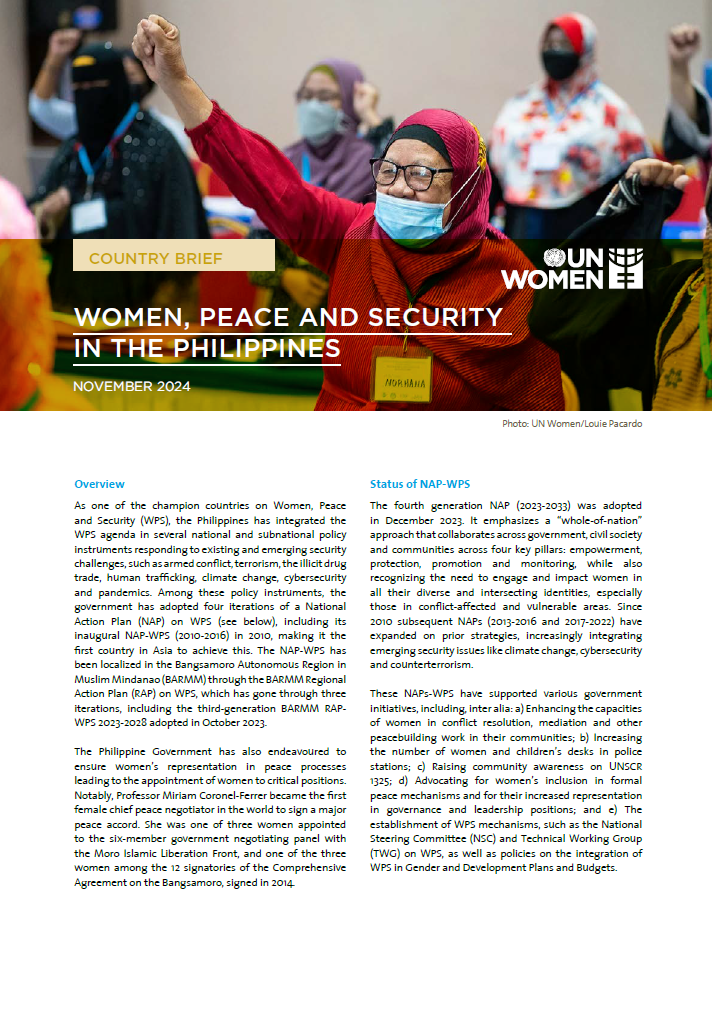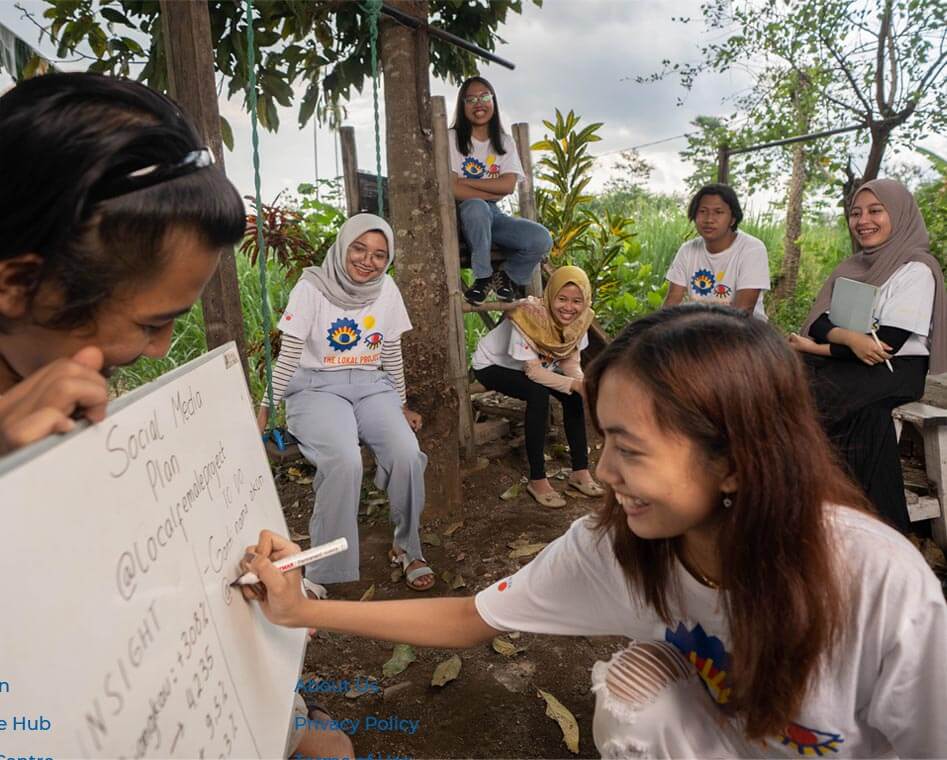
Women, Peace and Security in the Philippines
Publication Date: January 14, 2025
Total Pages: 5
Organization: UN Women
Languages: English
Country/Region: Philippines
Topic Area: Gender Mainstreaming, Gender equality and women’s empowerment, Peace and security, Sustainable Development Goals (SDGs), Conflict prevention, Relief and Recovery, Governance, National planning, Civil Society, Localization
Year: 2025
Resource Type: Briefs
Abstract
As one of the champion countries on Women, Peace and Security (WPS), the Philippines has integrated the WPS agenda in several national and subnational policy instruments responding to existing and emerging security challenges, such as armed conflict, terrorism, the illicit drug trade, human trafficking, climate change, cybersecurity and pandemics. Among these policy instruments, the government has adopted four iterations of a National Action Plan (NAP) on WPS (see below), including its inaugural NAP-WPS (2010-2016) in 2010, making it the first country in Asia to achieve this. The NAP-WPS has been localized in the Bangsamoro Autonomous Region in Muslim Mindanao (BARMM) through the BARMM Regional Action Plan (RAP) on WPS, which has gone through three iterations, including the third-generation BARMM RAPWPS 2023-2028 adopted in October 2023.
The Philippine Government has also endeavoured to ensure women’s representation in peace processes leading to the appointment of women to critical positions. Notably, Professor Miriam Coronel-Ferrer became the first female chief peace negotiator in the world to sign a major peace accord. She was one of three women appointed to the six-member government negotiating panel with the Moro Islamic Liberation Front, and one of the three women among the 12 signatories of the Comprehensive Agreement on the Bangsamoro, signed in 2014.

